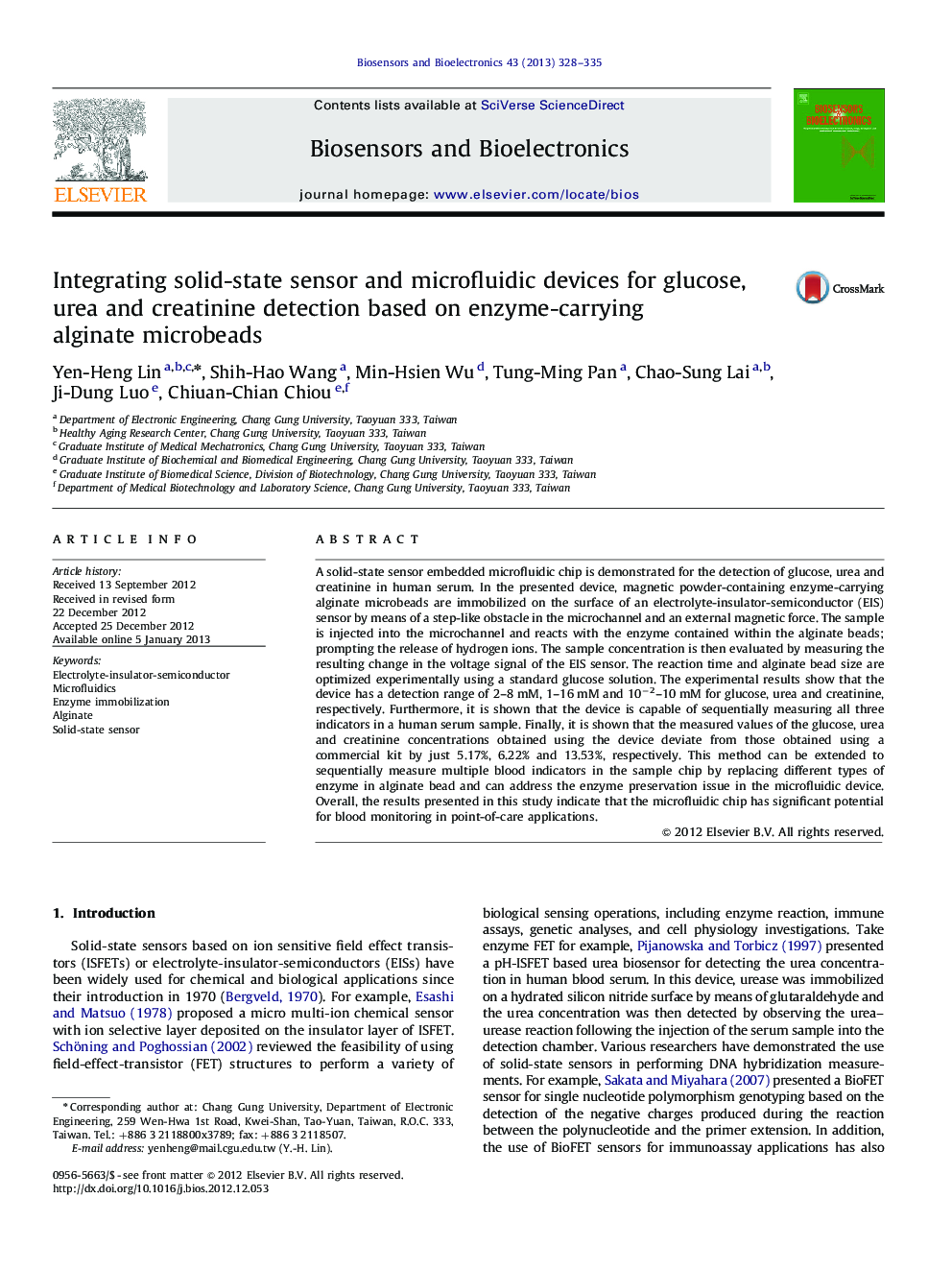| Article ID | Journal | Published Year | Pages | File Type |
|---|---|---|---|---|
| 866863 | Biosensors and Bioelectronics | 2013 | 8 Pages |
A solid-state sensor embedded microfluidic chip is demonstrated for the detection of glucose, urea and creatinine in human serum. In the presented device, magnetic powder-containing enzyme-carrying alginate microbeads are immobilized on the surface of an electrolyte-insulator-semiconductor (EIS) sensor by means of a step-like obstacle in the microchannel and an external magnetic force. The sample is injected into the microchannel and reacts with the enzyme contained within the alginate beads; prompting the release of hydrogen ions. The sample concentration is then evaluated by measuring the resulting change in the voltage signal of the EIS sensor. The reaction time and alginate bead size are optimized experimentally using a standard glucose solution. The experimental results show that the device has a detection range of 2–8 mM, 1–16 mM and 10−2–10 mM for glucose, urea and creatinine, respectively. Furthermore, it is shown that the device is capable of sequentially measuring all three indicators in a human serum sample. Finally, it is shown that the measured values of the glucose, urea and creatinine concentrations obtained using the device deviate from those obtained using a commercial kit by just 5.17%, 6.22% and 13.53%, respectively. This method can be extended to sequentially measure multiple blood indicators in the sample chip by replacing different types of enzyme in alginate bead and can address the enzyme preservation issue in the microfluidic device. Overall, the results presented in this study indicate that the microfluidic chip has significant potential for blood monitoring in point-of-care applications.
► A solid-state sensor integrated with a microfluidic chip is demonstrated. ► An enzyme delivery and immobilization approach is proposed using alginate microbeads. ► Multi-target detection is accomplished by alginate bead containing different enzymes.
